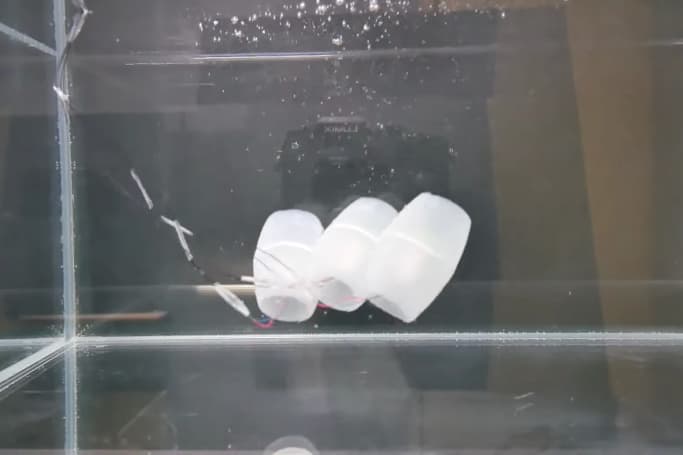If you’re designing robots for the exploration of oceans on other planets, you want something that’s tough, versatile and easy to store in a spacecraft. It turns out that soft-bodied robots inspired by a marine organism may be the perfect choice.
Salps are small animals found in oceans throughout the world, where they pump water through their gelatinous barrel-shaped bodies in order to move through the sea. They spend part of their life cycle alone, and part of it linked to other salps in long chains.
Led by researcher Valentina Lo Gatto, scientists at the University of Bristol have developed experimental underwater robots inspired by salps, known as RoboSalps.
Each one has a tubular soft silicone body, inside of which is a drone-style electric motor and propeller. That bidirectional propeller draws water through the body, letting the robot jet up and down or back and forth. Such a simple propulsion mechanism only allows for fairly basic movements, however.

Valentina Lo Gatto
With that limitation in mind, the RoboSalps can link up with one another, forming multi-robot structures that can maneuver more like a true submersible – some of them can be used for horizontal thrust, and some for vertical thrust.
As an added bonus, if one of the RoboSalps in a group should conk out, the others can compensate, providing a redundancy system. It’s also possible that multiple robots could autonomously travel to an underwater destination as a group, then split apart to perform separate tasks individually – after which they would link back together again.
“Because of their low weight and their robustness, they are ideal for extraterrestrial underwater exploration missions, for example, in the subsurface ocean on the Jupiter moon Europa,” said Lo Gatto.
Other suggested applications include the inspection of sewage tunnels and industrial cooling systems.
The RoboSalps can be seen in action, in the video below.
RoboSalps
Source: University of Bristol
Source of Article